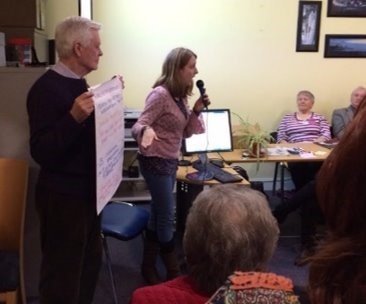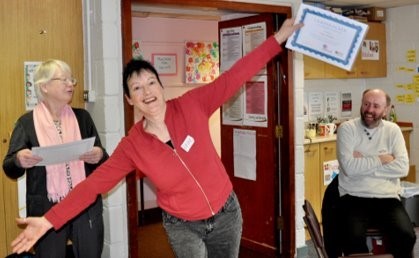In This Section
- CIRTL Homepage
- Meet our Team
- Resources
- Short Guides
- Short Guide 1: Starting Well
- Short Guide 2: Scaffolding Learning
- Short Guide 3: Icebreakers
- Short Guide 5: Discussions for Online Learning
- Short Guide 4: Visualising Thinking
- Short Guide 6: Universal Design for Learning
- Short Guide 7: Group Work
- Short Guide 8: Reimagining Practicals
- Short Guide 9: Assessment in the Age of AI
- Sustainable Development Goals Toolkit
- Group Work
- Connected Curriculum
- Civic Engagement Toolkit
- Learning Outcomes
- DigiEd Reading List
- Ethical Use of GenAI Toolkit
- Short Guides
- Professional Development
- Events
Civic Engagement in the Curriculum – A Critique

This article provides a critique of civic engagement in the curriculum and attempts to articulate what we mean by high quality and sustainable civic engagement practices. Community engaged learning initiatives do not act as a silver bullet for resolving community challenges or making the most of opportunities available. Students and academics cannot parachute into a community with the attitude of waving a magic wand before disappearing back to campus.
This approach undermines the strengths and uniqueness of community entities and the individuals which comprise those entities. What’s more, this deficit approach does not provide the fertile ground needed for the exchange of knowledge and expertise across groups.
From the community’s perspective, CEL aims to build community capacity, to nurture existing community strengths and by virtue of a diverse group working together inject a little energy and confidence back into the community (if needed). Civic and community engagement in its various forms including service learning has been criticised in the past for adopting a ‘saviour’ mentality. High quality and critical community engaged learning opportunities can assist students to:
Move beyond their stereotypical notions of difference to an understanding of the structural and deep-seated inequities of our society. In doing so, they move community service learning from a human relation approach to a more transformative model of civic conscience. It is this stance that helps shift community service learning from an individual feel good experience to a social responsibility... (O’Grady, 2014).

Civic engagement, for some, still conjures up images of students undertaking community service tasks such as painting walls or collecting rubbish. While these are worthwhile activities and have a place in the greater sphere of volunteering, they are not what we are talking about when we talk about civic engagement in the curriculum at University College Cork.
To distinguish CE in the curricula from volunteering or other community-service activities, higher education institutions have had to clearly signal what they mean by civic and community engagement and how to adhere to its principles so that they uphold the values that underpin this work.
The design of this toolkit aims to support UCC staff to develop the competencies and skills to engage in high quality CEL that does not displace or undermine the hard work and expertise of the various community entities we engage with. The examples you see in this toolkit are selected because they bring an element of transformation to the learning experiences of students, community partners and lecturers.
We have learned from academic colleagues who Connect with Societal Challenges, Learn with Communities, and Enhance Partnerships. The individuals featured in this Toolkit have and continue to develop a particular disposition necessary to embed civic engagement in their teaching approaches.
For example, the approaches featured all highlight a particular attention to reciprocity especially in how the respective lecturers design and carry out their initiatives with their community partners. They value the unique learning experiences the community partner can provide and this attitude is cultivated in all their interactions with students allowing their students to similarly value community knowledge.

Community engaged research and learning initiatives attract criticism if there is a lack of real impact, and where there is insufficient focus on inequalities and social justice:
Without the exercise of care and consciousness, drawing attention to root causes of social problems, and involving students in actions and initiatives addressing root causes, service-learning may have no impact beyond students’ good feelings (Mitchell, 2008: 51)
The role of the lecturer in designing and implementing CEL offerings that avoid these pitfalls cannot be underestimated. It follows that higher education institutions have a responsibility to create a culture that fosters best practice civic engagement and provides staff with access to appropriate professional development opportunities.
As the module coordinator and more than likely the primary designer of the CEL offering, the lecturer plays a critical role in establishing the right conditions for developing a high quality and sustainable partnership with their community collaborator. Advanced community engaged learning opportunities should push students to the edges of their understanding of society and the people with whom they are interacting. Achieving this requires great skill on the lecturer’s behalf and the right organisational and other conditions. This takes time and experience to develop.
To foster the disposition and competencies required to design and implement high impact CEL partnerships, we invite you to learn from the CEL collaborations found in the Enhance Partnership section. If you would like to go deeper into the values underpinning civic engagement and related concepts, check out the work of theorists such as Paulo Freire, Bell Hooks, John Dewey and Ernest Boyer.
Further Reading
Mitchell, T. (2008), “Traditional vs Critical Service-Learning: Engaging the Literature to Differentiate Two Models”, Michigan Journal of Community Service Learning, pp. 50 - 65.
O’Grady, C. (2014), Integrating Service Learning and Multicultural Education in Colleges and Universities, Routledge.
For more on this story contact:
This Practice Insight is published by @UCC_CIRTL and @UCC_Civic as part of the CE Toolkit for embedding civic and community engagement in the curriculum. Discover more about How to Enhance partnerships.
